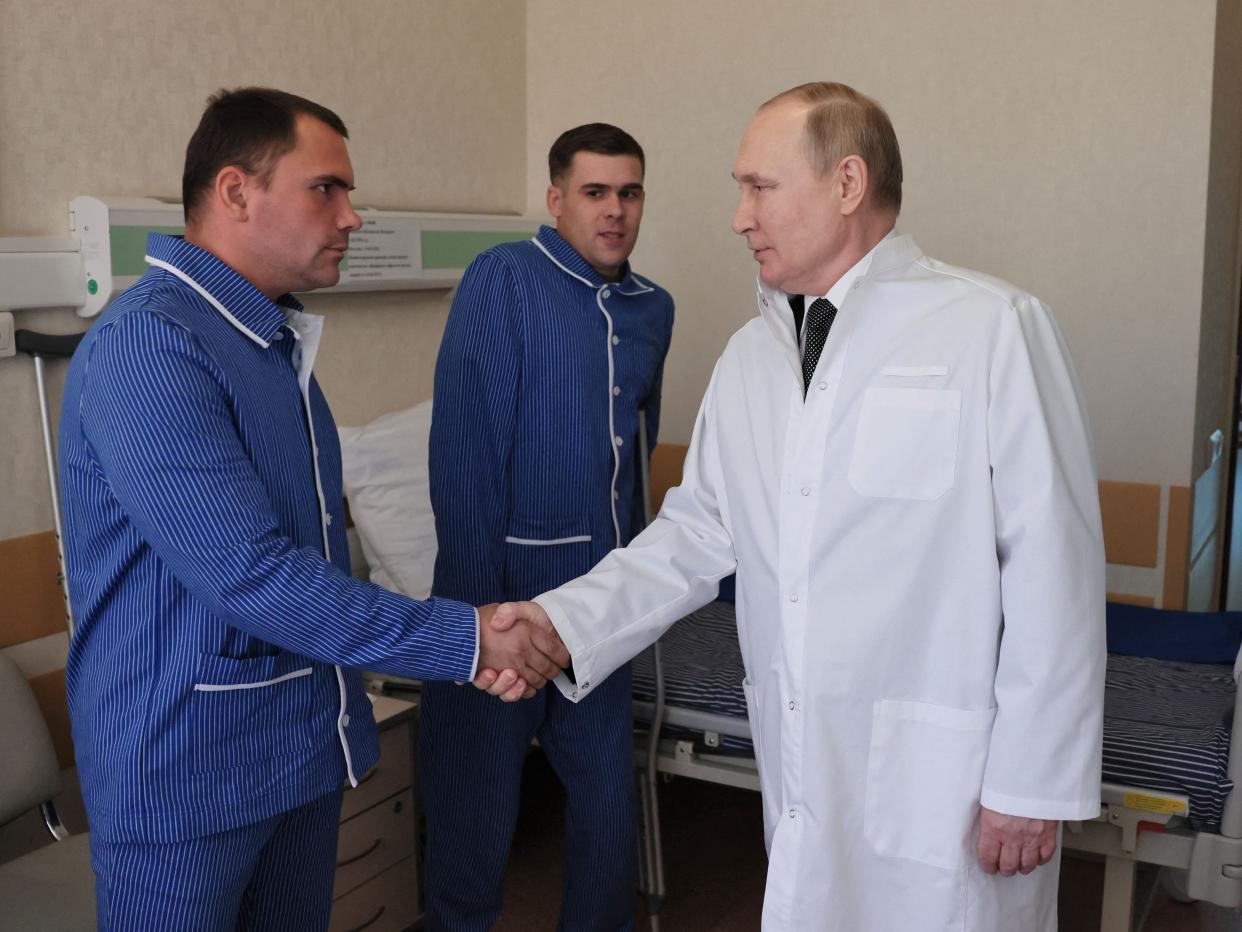Russia would need to spend 6% of its entire 2024 budget to pay wounded soldiers and families of dead troops, 2 researchers estimate

Two researchers in the US say Russia's promised payouts to its wounded and dead would take $26 billion.
That's about 6% of the country's budget for 2024, which is $414 billion.
The researchers arrived at the figure through open-source data and Russia's own laws.
The Kremlin would need to spend some 2.3 trillion rubles, or $26 billion, in promised one-time payouts to wounded soldiers or families of those killed in Ukraine, according to two researchers estimates.
That's about 6% of Russia's total budget for 2024, which is 36.6 trillion rubles, or $414 billion.
The figures were calculated by Thomas Lattanzio, a public service fellow at the Johns Hopkins School of Advanced International Studies, and Harry Stevens, a research assistant at the US think-tank Center for the National Interest.
In a commentary for War On The Rocks, they used estimates from French and British officials to ballpark Russia's casualties from the Ukraine war. They arrived at a total of 400,000 wounded or dead, including 100,000 soldiers killed.
Russian law entitles families of killed soldiers to a one-time payment of 8.8 million rubles, with another 5 million rubles from a measure passed in 2022 just after the war began.
Lattanzio and Stevens wrote that stacked with additional payments of between 1 and 3 million rubles from local authorities, most families would receive one-time payments totaling about 14 million rubles, or $158,000.
Wounded soldiers also receive 3 million rubles, per the 2022 decree.
"Simple math shows that one-time payments would equate to 900 billion rubles for wounded personnel and at least 1.4 trillion for families of the dead, 2.3 trillion rubles total," wrote Lattanzio and Stevens.
The cost of the one-time payments would be a "staggering amount," they wrote.
Representatives for the Russian Ministry of Defense did not immediately respond to a request for comment sent outside regular business hours by Business Insider.
Still, it's not clear if Russia has consistently been rolling out its one-time payments to its wounded or its deceased soldiers' next-of-kin.
Reuters reported in June 2022 that some soldiers, including four servicemen interviewed by the outlet, were struggling to receive their compensation after sustaining battlefield injuries.
In November, Radio Free Europe's Russian investigative unit, Systema, found that multiple Russian contract soldiers and families of those killed were still not receiving their payments despite trying to acquire them.
In April, Ukraine published what it said was a recording of an intercepted call from a Russian soldier who claimed that Russia designated those killed as "missing in action" so it could deny full payouts to their families.
Ukraine claimed in June that Russia has suffered 515,000 casualties, while Moscow does not release regular updates on how many of its soldiers were killed or wounded.
Independent Russian outlet Mediazona, which tracks the names of those killed in the war, estimated in a July 5 update that between 106,000 to 140,000 Russian troops have died, including 39,000 this year.
Yearly cost of treating PTSD at 2% of budget, researchers say
Lattanzio and Stevens also estimated the cost of Russia treating Post-Traumatic Stress Disorder among its servicemen, arriving at about $15,000 yearly for each patient treated.
They used cost figures from the US on its own PTSD treatment, adjusted them for purchasing power parity in Russia, and assumed that 500,000 Russian veterans would acquire some "sort of post-traumatic stress disorder" from the war.
In total, this amounts to a yearly 660 billion rubles, or $7.4 billion, to treat PTSD from the war, which is about 2% of Russia's total budget.
Russia plans to spend nearly a third of its total 2024 budget on defense, or about 10.8 trillion rubles, which is $122 billion.
That's nearly double the amount it spent on defense in 2023, and much of the funds are expected to flow toward weapons production.
Many observers say such a skew toward military expenditure indicates that Russia intends to fight out the Ukraine war for a prolonged period.
"By staking everything on rising military expenditure, the Kremlin is forcing the economy into the snare of perpetual war," wrote analysts from the Carnegie Endowment for International Peace's Russia and Eurasia Center.
Read the original article on Business Insider


